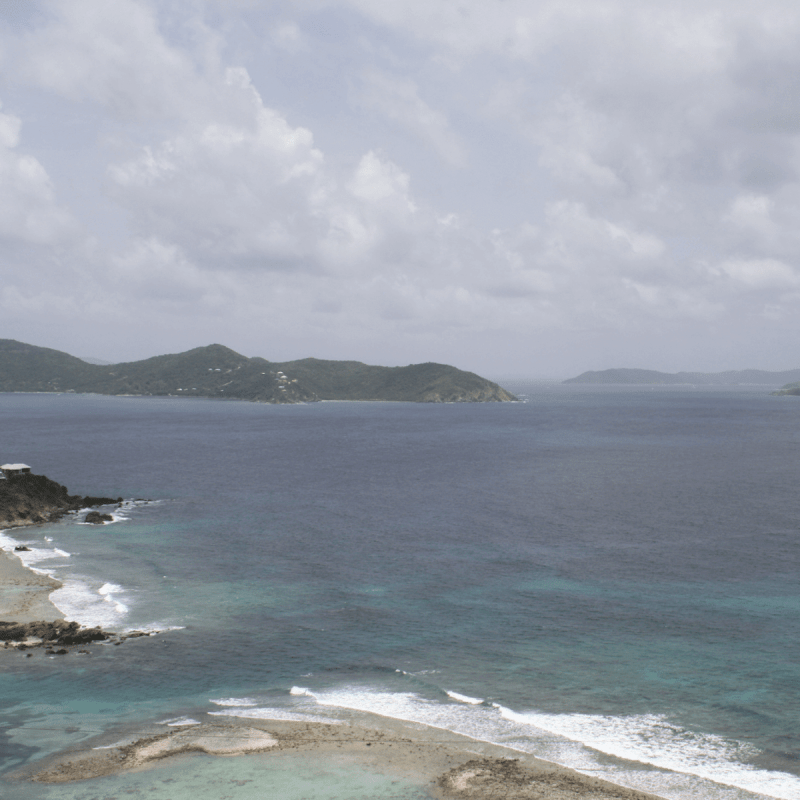
St. John is one of the U.S. Virgin Islands along with St. Croix and St. Thomas. It is the smallest island with an area of 20 square miles and 60 percent of the Island is protected by the Virgin Islands National Park. With 16 breathtaking beaches and over 30 hiking trails, it is a great place to get away from the rat race and enjoy the outdoors in the heart of the Caribbean.
Videos by TravelAwaits
If you are looking for a Caribbean vacation without all the tourist attractions, St. John should be at the top of your list. If you love hiking, going to the beach, or having a good drink overlooking the clear blue Caribbean Ocean, keep reading.

How To Get To St. John
Getting to St. John is a unique adventure. The island is about 4 miles east of St. Thomas and does not have an airport. To get to the island, you must first fly into St. Thomas and then take a ferry over to St. John.
Passenger Ferry
There are two options to travel from St. Thomas to St. John: by passenger ferry or vehicle barge. From the airport on St. Thomas, you can take a taxi to one of the ferry or barge docks. There are two passenger ferry options on St. Thomas. The ferry from Red Hook, which is on the east side of the island, leaves once every hour. There is also a ferry closer to the airport in Charlotte Amalie, but it only makes the trip three times a day. Once you arrive on St. John, you will find several car rental companies and taxis near the ferry dock to help you get around the island.
Vehicle Barge
The second option is to rent a Jeep on St. Thomas and take the vehicle barge over to St. John. I say Jeep specifically because you will need a small four-by-four to get to some of the better trails and sites. There are car rental companies near the airport and most will pick you up at your terminal. From the airport, drive across the island to the vehicle barge at Red Hook. The airport is on the west side of St. Thomas and the ferry dock is on the east side. It takes about 20–30 minutes to drive between the two.
There are pros and cons to each choice, but for me, I choose the second option. Dealing with lugging your bags from a taxi to the ferry, off the ferry, and then walking to a car rental company on St. John is a pain — especially if it is raining. It is really a pain if anyone with you packs as much as my wife does!
When you rent a Jeep on St. Thomas, you usually don’t have to touch your bags after you leave the terminal. You are quickly in your Jeep and can drive yourself anywhere on St. Thomas before heading to the car barge. You could also spend a night on St. Thomas if you wish.
Another advantage of renting on St. Thomas is you can get groceries and supplies before heading over to St. John. Everything on St. Thomas is cheaper and there is more variety.
Pro Tip: Keep in mind that cars drive on the left side of the road on St. Thomas and St. John. It can be a little confusing at first, but in general, just follow everyone else. If you are uncomfortable driving, you may prefer to just rent on St. John as you will be sharing the road with fewer drivers there. While there are taxis available on St. John, renting a Jeep is part of the adventure and makes the trip much more enjoyable.

Where To Stay On St. John
Cruz Bay
When you exit the car barge on St. John, you will be in Cruz Bay on the west side of the island. This is the biggest “town” on the island and it’s the main area for groceries, restaurants, shopping, and hotels. If you want to be close to shopping and the nightlife, staying somewhere near Cruz Bay is for you.
Coral Bay
On the east side of the island is a small town called Coral Bay with a few restaurants, bars, and small shops. Most of the best hiking trails are also not far from Coral Bay. If you want to get away from civilization, stay in a villa near Coral Bay. Many are listed on Airbnb and Vrbo.
I personally enjoy staying in Coral Bay and hiking the area. You can quickly make friends in the evenings at bars like Aqua Bistro.

When To Go To St. John
It is a misconception that it is “too hot” during the summer as temperatures on St. John average 75–85 degrees Fahrenheit year-round. With the tradewinds on the west side of the island, you do not need air conditioning in a windward facing villa, even in the summer months.
The busy season on the island is around Christmas and January. Many are looking to escape winter and enjoy the holidays somewhere tropical. I would avoid these months.
I would also avoid hurricane season altogether, which runs from July–November. Hurricanes can be very unpredictable. As I mentioned, just getting here is an adventure, and hurricanes can go from a minor inconvenience to a huge problem in just a few days. Being in the middle of a major hurricane is a little too much of an adventure, even for this survivalist!
To enjoy the island without the crowds and hurricanes, the best time to go is in late spring and early summer. This is after all the holiday travelers leave and before hurricane season starts. The crowds are low and the weather is wonderful.
Related Reading:
